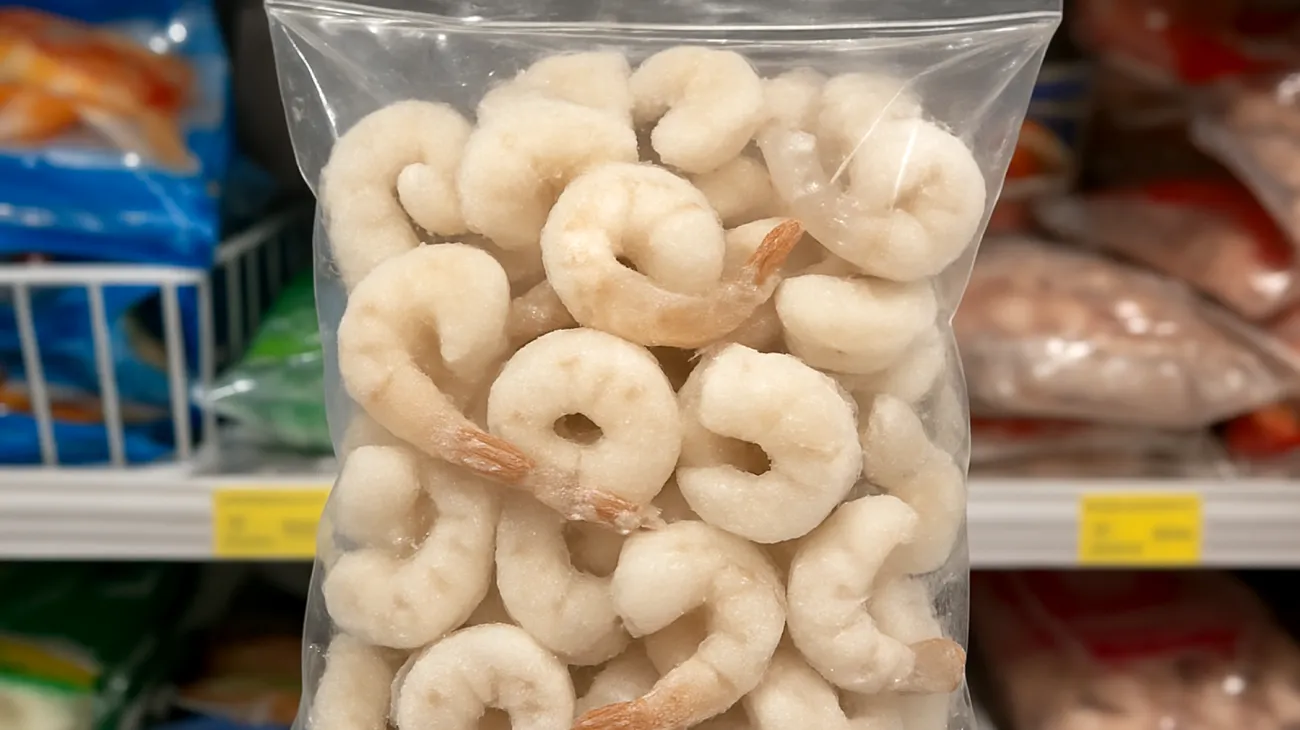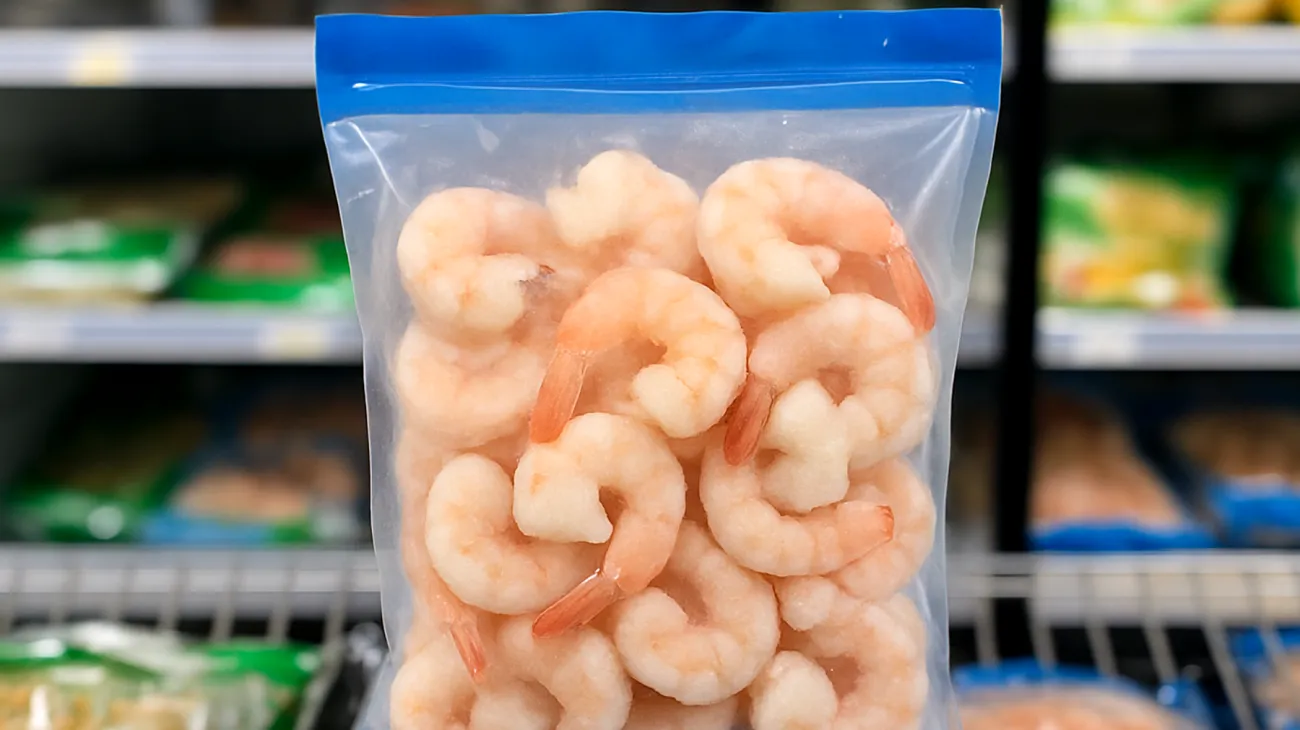Walk through any supermarket freezer aisle in the UAE, and you’ll encounter an abundance of frozen shrimp packages adorned with enticing claims like “low-calorie,” “high-protein,” and “perfect for your fitness journey.” These marketing messages tap into the rising consumer demand for convenient, health-oriented meal options in the UAE, where the frozen seafood category accounted for nearly 38% of the frozen food market revenue in 2024.
The seafood industry has promoted frozen shrimp as a healthy, protein-rich food, which aligns with its nutrition profile: shrimp typically provides about 18-20 grams of protein per 85-gram serving with low fat content. However, the transformation from ocean to freezer often involves processing steps and additives that can significantly alter the final product’s health characteristics.
The Sodium Deception Hidden in Plain Sight
One notable concern with frozen shrimp is the sodium content. Processing facilities frequently treat frozen shrimp with sodium-based preservatives, such as sodium tripolyphosphate and sodium bisulfite. These additives help retain texture, limit bacterial growth, and maintain the appealing pink color that consumers associate with freshness.
A standard serving of processed frozen shrimp may contain 200-800 milligrams of sodium, representing 10-33% of the recommended daily limit of 2,300 mg set by health authorities. For those managing hypertension or following weight loss programs, this hidden sodium may undermine dietary goals and contribute to water retention and bloating.
Reading Between the Marketing Lines
Packaging often emphasizes high protein content with bold, large-print text, while sodium content appears in smaller print or less prominent places. This practice is a well-documented marketing strategy that leverages consumer attention cues at the point of sale. You’ll notice prominent declarations of protein content while sodium information typically appears in smaller, less noticeable typography – a calculated approach designed to influence purchasing decisions when consumers scan products.
Chemical Cocktails: The Processing Reality
Beyond sodium, frozen shrimp is sometimes treated with other chemicals. Sulfites, such as sodium bisulfite, are routinely used to prevent discoloration but can trigger sulfite-sensitive allergic reactions in susceptible individuals, particularly those with asthma. Phosphate compounds are widely used to enhance water retention, with studies indicating that shrimp can absorb up to 20-30% added water weight following phosphate treatment, which affects both product weight and texture.
While regulatory authorities recognize these additives as generally safe at approved levels, their presence conflicts somewhat with the “natural” image presented in marketing materials. The gap between the wholesome messaging and the actual processing methods deserves consumer awareness.
The Weight Loss Contradiction
Marketing materials frequently position frozen shrimp as ideal for weight management, but several factors complicate this claim. Sodium-induced water retention can lead to temporary weight gain, while phosphate-treated shrimp contains up to 30% added water, creating misleading serving weights. Some individuals may also experience allergic reactions to added sulfites, and pre-cooked varieties often include high-sodium sauces that add to the overall nutritional load.

Decoding Packaging Claims and Legal Loopholes
The regulatory environment surrounding seafood marketing contains numerous gray areas that manufacturers utilize. Terminology such as “natural,” “fresh-frozen,” and “minimally processed” is not universally defined for seafood and can be used loosely under UAE and international food labeling regulations.
“Fresh-frozen” particularly deserves scrutiny. While this term typically means the product was frozen shortly after harvest, storage duration prior to freezing, exposure to chemicals, or multiple processing steps are not always disclosed. The journey from fishing vessel to your local supermarket may involve more steps than the packaging suggests.
The Convenience Trap
Frozen shrimp’s appeal lies in convenience, quick cooking, and long shelf life, factors that align with modern consumer priorities and drive rising demand in the UAE market. However, pre-cooked and seasoned frozen shrimp products almost always have higher sodium and additional preservatives compared to plain raw frozen shrimp. These additives help ensure food safety and palatability over long storage and shipping periods, but they come at a nutritional cost.
The emphasis on convenience in marketing materials often overshadows these trade-offs. Quick-cooking varieties and pre-seasoned options may save time, but they typically contain the highest levels of sodium and processing additives.
Making Informed Choices in UAE Markets
Smart shopping requires looking beyond surface-level marketing claims and examining nutritional labels and ingredient lists carefully. Pay particular attention to sodium content per serving, and remember that package servings are frequently smaller than typical meal sizes, which can make the sodium content appear lower than what you’ll actually consume.
When shopping in UAE supermarkets, you’ll find that flash-frozen products with minimal additives typically command premium prices. These options may not feature the aggressive marketing of heavily processed alternatives, but they offer a closer approximation to fresh shrimp’s nutritional profile.
- Check sodium content per serving: Look for products with less than 200mg sodium per serving
- Examine ingredient lists: Choose options with fewer additives and preservatives
- Compare serving sizes: Remember that actual portions are often larger than listed servings
- Consider plain varieties: Raw frozen shrimp typically contains fewer processing chemicals
Understanding the difference between marketing promises and processing realities empowers you to navigate the frozen seafood aisle more effectively. While frozen shrimp offers notable protein and low-fat benefits, the processing methods often increase sodium and water content significantly. Being aware of these factors allows you to select products that truly align with your health goals rather than simply trusting the bold claims on the package. The key lies in reading labels thoroughly and understanding that convenience often comes with compromises that marketing departments would prefer you didn’t notice.
Table of Contents

